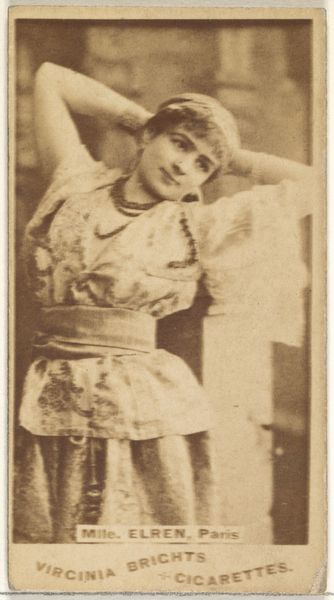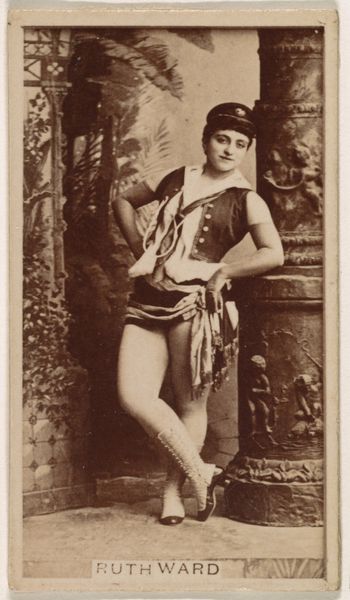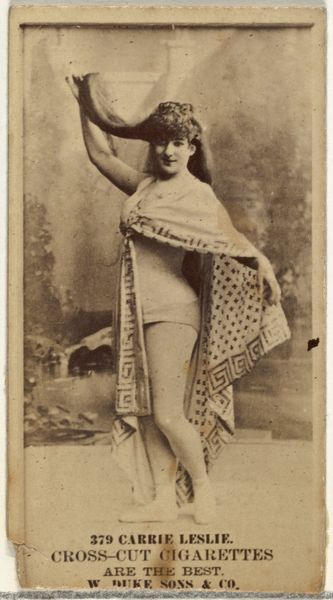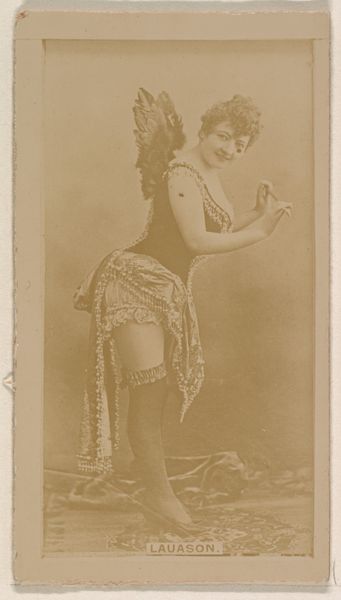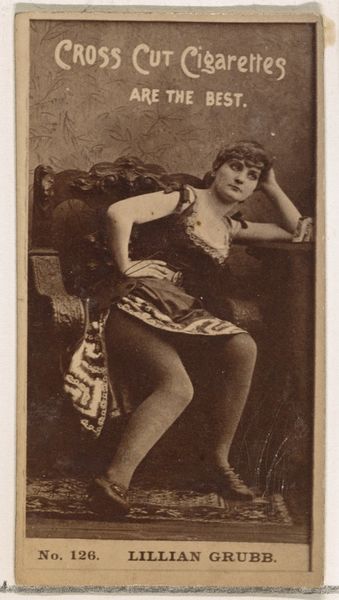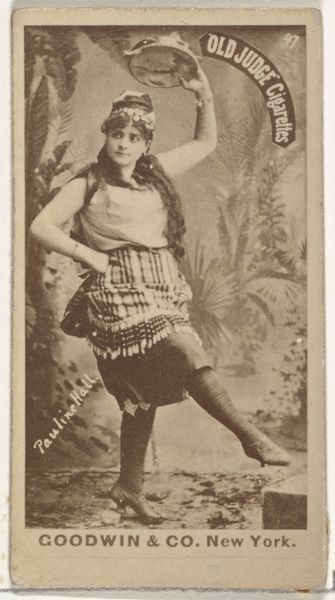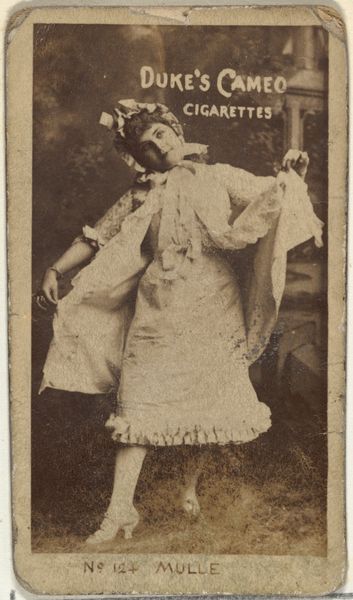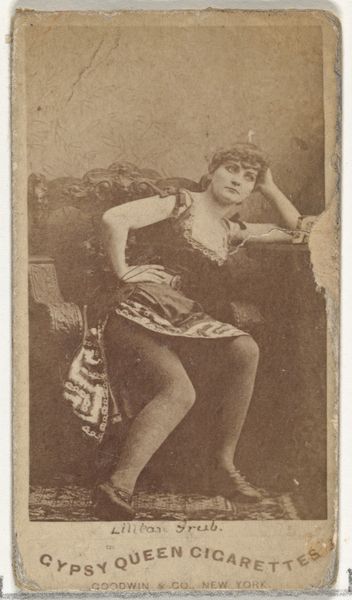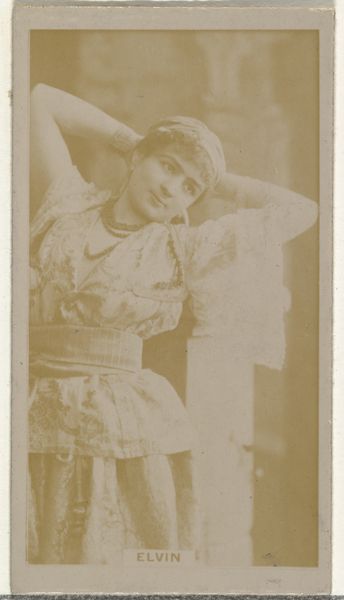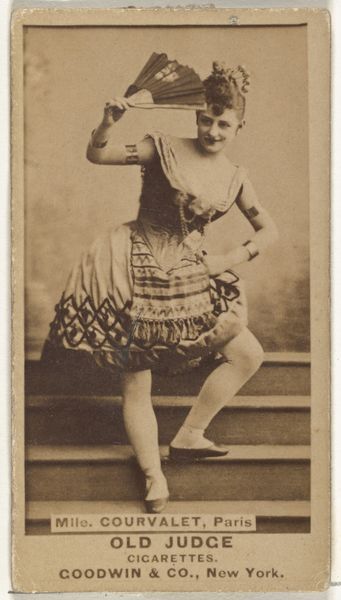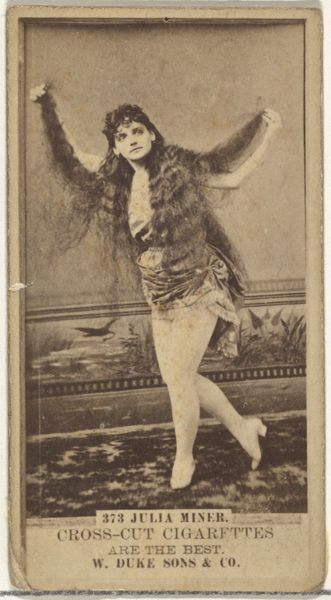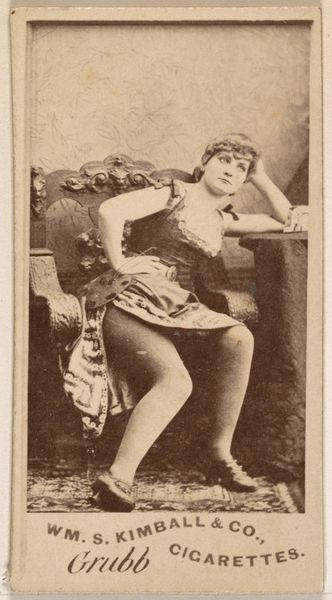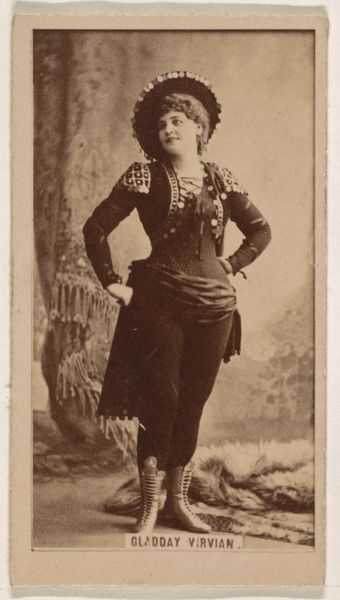
Mlle. Grey, from the Actresses series (N203) issued by Wm. S. Kimball & Co. 1889
drawing, coloured-pencil, print
portrait
drawing
coloured-pencil
impressionism
coloured pencil
Dimensions: Sheet: 2 5/8 × 1 3/8 in. (6.6 × 3.5 cm)
Copyright: Public Domain
Editor: So, here we have “Mlle. Grey, from the Actresses series,” created in 1889 by Wm. S. Kimball & Co. It’s a small drawing, rendered in coloured pencil and reproduced as a print. What immediately strikes me is the commercial nature of the image; it feels more like an advertisement than high art. How should we think about this image, knowing that it was given away with cigarette purchases? Curator: That's a perceptive point. Focusing on its materiality reveals much. The use of colored pencil, and its mass production as a print, speak volumes. Consider the labour involved in creating such multiples, the mechanisms of print production in the late 19th century. It wasn't about individual artistic expression, but about commodity circulation. It shifts our thinking, doesn't it? Are we looking at art, or an early form of branding? How do these production means collapse the supposed distance between “high art” and commercial craft? Editor: I hadn’t really considered the labor and means of production. How did the act of cigarette consumption become linked to the visual representation and commodification of actresses like Mlle. Grey? Curator: Exactly! It speaks to the growing consumer culture, and how companies like Kimball used images to promote social aspirations and celebrity. Look at the costume, almost a caricature, but rendered with precision meant to signify glamour, yet printed en masse and tucked into cheap cigarette packs. Where does the artistic labour truly reside? Editor: So, analyzing this piece really forces us to reconsider how materials, manufacturing, and consumerism intertwine to shape our understanding of what we see? Curator: Precisely. And how these commercial images, initially intended as ephemeral objects of consumption, gained lasting value. That says much about how cultural value is ascribed, produced, and re-produced.
Comments
No comments
Be the first to comment and join the conversation on the ultimate creative platform.
